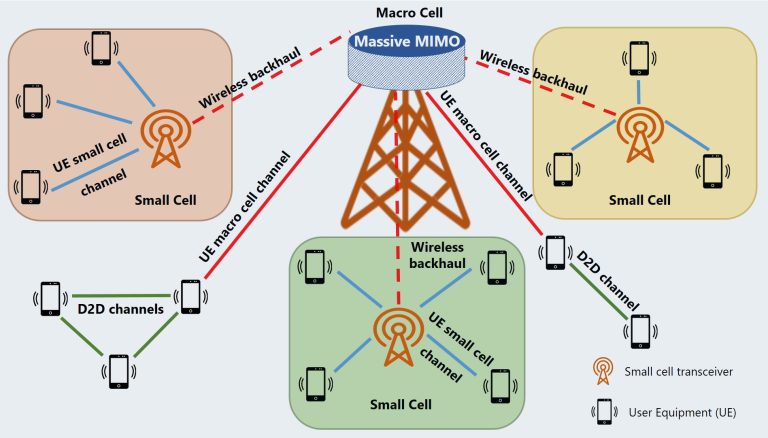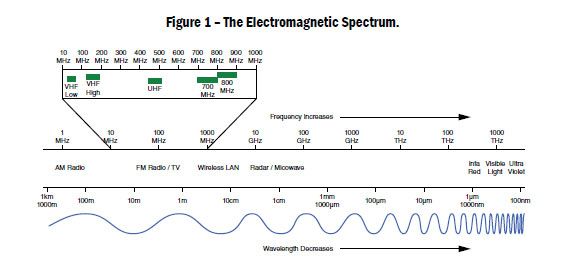The Management of 5G Frequency Spectrum
telcomatraining – The management of the 5G frequency spectrum is a critical component of the successful deployment and operation of fifth-generation mobile networks. As 5G networks promise faster speeds, lower latency, and the ability to support millions of connected devices, efficient spectrum management becomes essential to ensure that these advancements are realized. The 5G spectrum is not just about allocating frequencies; it involves careful planning, regulation, and technology to ensure optimal use of limited resources.
Spectrum Allocation for 5G
The first step in 5G spectrum management involves the allocation of specific frequency bands for the network’s operation. Unlike earlier generations, which primarily used lower frequency bands (below 6 GHz), 5G uses a broader range, including sub-6 GHz and millimeter-wave (24 GHz and above) frequencies. These higher frequencies offer larger bandwidths, enabling faster data transfer rates, but they also have shorter range and higher susceptibility to signal attenuation due to environmental factors like weather or obstructions.
Governments and regulatory bodies around the world are tasked with allocating these frequencies in an orderly and transparent manner to avoid interference between different service providers. International coordination through organizations like the International Telecommunication Union (ITU) plays a crucial role in ensuring that spectrum usage across borders is standardized and efficient. National authorities, such as the Federal Communications Commission (FCC) in the United States or the European Communications Office (ECO) in Europe, typically oversee the auctioning of spectrum bands to private telecommunications companies.
Spectrum Sharing and Dynamic Spectrum Management
As the demand for wireless bandwidth increases, spectrum sharing has emerged as a crucial strategy in managing 5G networks. In traditional systems, specific frequency bands were allocated to specific users or service providers, with little flexibility. However, the sheer demand for spectrum, combined with the need to maximize its use, has led to the development of dynamic spectrum management (DSM) technologies.
DSM allows for the real-time allocation of spectrum based on demand, usage patterns, and environmental conditions. This approach increases the efficiency of spectrum use, as it reduces periods of underutilization and helps avoid congestion in highly trafficked areas. Technologies such as cognitive radio and software-defined networks (SDN) are used to facilitate DSM by allowing devices and base stations to dynamically adjust to available frequencies.
One example of spectrum sharing is the Citizens Broadband Radio Service (CBRS) in the United States, which allows commercial users to share the 3.5 GHz band with federal users. This type of spectrum sharing promotes a more flexible, efficient, and economically viable way to utilize the available spectrum, especially in urban environments where demand is high.
The Role of 5G in Enabling New Applications
One of the key drivers behind the increasing demand for 5G spectrum is the wide range of new applications that 5G is expected to enable. These include the Internet of Things (IoT), autonomous vehicles, smart cities, augmented reality (AR), and virtual reality (VR). These applications require massive amounts of data transmission with low latency, which can only be achieved through the efficient management of spectrum.
For instance, IoT devices, which will number in the billions, require a massive amount of low-power, wide-area connectivity. While many of these devices can operate on existing LTE networks, 5G will provide a more scalable and efficient infrastructure. However, to support such large-scale connectivity, spectrum management must ensure that these devices do not interfere with each other or with other types of communication systems.
Autonomous vehicles and smart cities, which depend on high-speed, low-latency communications, also rely on the availability of dedicated frequency bands. In these cases, the priority is to ensure that these critical applications receive the necessary spectrum without interference from less urgent traffic.
Challenges and Future Directions
The management of the 5G frequency spectrum faces several challenges. The growing demand for wireless bandwidth, coupled with the finite amount of spectrum available, means that spectrum congestion could become a significant issue. In urban areas, where demand is highest, the lack of available spectrum for high-speed services could hinder the full realization of 5G’s potential.
Moreover, the introduction of new technologies, such as millimeter-wave frequencies and dynamic spectrum sharing, requires continued innovation in both hardware and software. The infrastructure must support these technologies, while also ensuring that operators can maintain reliable services for consumers.
In the future, spectrum management for 5G will need to become even more sophisticated. As demand for bandwidth increases and new applications emerge, regulators and service providers will need to explore advanced techniques, including AI-based spectrum management and more dynamic spectrum allocation methods. Furthermore, international cooperation will be essential to harmonize spectrum allocations across different regions and ensure the seamless global deployment of 5G services.
Conclusion
The management of the 5G frequency spectrum is a complex but vital aspect of the successful deployment of 5G networks. Through careful allocation, dynamic spectrum management, and innovative technologies, regulators and telecom providers can meet the growing demand for faster, more reliable, and more efficient wireless communication. As 5G continues to evolve, so too must the strategies for managing its spectrum to ensure that this transformative technology can deliver on its promises.






